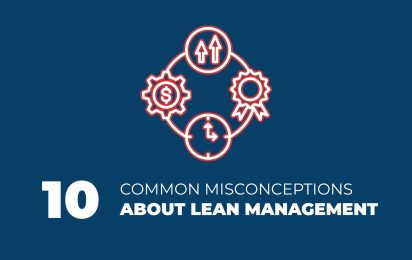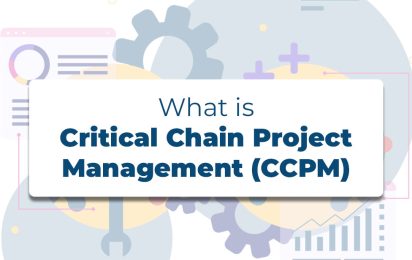HOW TO USE PROJECT scoping TOOLS?

In this article, you will find the presentation of three tools to properly scope and plan your Lean Management projects.
WHAT TOOLS ARE USED TO OPTIMIZE RESOURCE AND INVENTORY MANAGEMENT?
THE PARETO LAW AND ABC ANALYSIS
In the context of a factory, managing hundreds of references can be a significant challenge. To bring clarity and prioritize the attention given to each reference, the most widely used tool is ABC analysis, also known as the 80/20 rule or Pareto law.
This method, developed in the 19th century, allows references to be classified into three distinct categories:
1 – CLASS A
Representing 80% of the value (in euros or manufacturing time), this category includes only 20% of the total number of references.
2 – CLASS B
Representing 15% of the value, this category groups 30% of the references.
3 – CLASS C
Representing 5% of the value, this category includes half of the references, or 50%.
To refine this value, the ABC/fmr Matrix intervenes by considering the frequency of consumption, thus combining the valuation of products with their usage frequency.
ABC/FMR MATRIX
The ABC/fmr Matrix defines the scope of your project. This method involves conducting a vertical ABC analysis and horizontally integrating the frequency of manufacturing or consumption of products into fmr:
- F for Frequent: typically represents what is manufactured or consumed daily.
- M for Medium: corresponds to a weekly frequency.
- R for Rare: defined as a monthly frequency.
To steer your projects towards strategic scopes, focus on frequently manufactured Class A products. Although this may be limited to a few products, improvements in this category will yield daily gains representing a significant portion of your revenue. You can also expand your analysis to Class A products manufactured less frequently (M), or frequently manufactured Class B products, and so on.
Given the dynamic nature of products, it is recommended to frequently recalculate the ABC/fmr Matrix.
COMPLEMENTARY MATRICES AND PRACTICAL APPLICATIONS
Various complementary matrices can be created: a matrix based on revenue, volume, or even hours worked. You choose the relevance of the chosen criterion.
This methodology can be used in improvement projects, including initiatives such as the 5S project in a workshop or logistics warehouse, aimed at optimizing storage locations.
WHAT IS A SIPOC DIAGRAM?
The SIPOC diagram (Supplier, Input, Process, Output, Customer) represents a methodology for visualizing and describing the process on which we want to work. This essential tool in process management has a great capacity to systematically and thoroughly map each step of the process, tracing its path from suppliers to customers.
- S for Supplier: people or organizations providing inputs.
- I for Input: resources necessary for executing the process.
- P for Process: activities that add value to the inputs.
- O for Output: the final product delivered to the customer.
- C for Customer: people or organizations using the final product.
The SIPOC Diagram
Starting with suppliers, it identifies the various sources of supply, detailing the types of inputs provided to the process. It then examines the different stages of the process itself, analyzing each phase in depth, the resources used, and the actions performed. Finally, it traces the path of the results to the end customers, detailing how the process outputs meet the customers’ needs and expectations.
The SIPOC diagram offers a strategic perspective on the process dynamics. It highlights the importance of upstream (suppliers) and downstream (customers) partners in the overall functioning of the process.
WHAT IS THE PRINCIPLE OF THE SMART METHOD?
The SMART method is a tool that helps define clear and achievable objectives. This methodology provides a comprehensive framework to guide the successful planning and execution of projects. It stands for Specific, Measurable, Achievable, Realistic, and Time-bound.
1 – SPECIFIC
Indicates that the objectives are clearly defined in terms of what needs to be accomplished, by whom, and how precisely. By analyzing every detail, this characteristic ensures a common understanding and eliminates any ambiguity.
2 – MEASURABLE
Means that an objective should be defined so that its quantity and quality can be precisely evaluated. This not only allows for the establishment of tangible criteria to assess progress but also ensures an objective evaluation of results.
3 – ACHIEVABLE OR ACCEPTABLE
Highlights the importance of goals being possible and feasible within the available resources. They can then be accepted by the teams, ensuring collective buy-in and motivation.
4 – REALISTIC
Close to “Achievable,” this component adds a further nuance: the goals align with the company’s strategy and customer expectations, thus contributing to long-term growth and success.
5 – TIME-BOUND
This component emphasizes the temporal nature of objectives. It means that each project should have a clear start, a determined end, and a defined duration. It ensures effective time management, eliminating unnecessary delays and promoting temporal discipline.
CONCLUSION
The ABC/fmr method, the SIPOC diagram, and the SMART method are project framing tools that will be very useful for completing the Define phase (D) of a DMAIC project or the Plan phase (P) of a PDCA project.
Essential for establishing a solid structure, they enable effective management of objectives in an industrial environment.
Our last posts

10 Common misconceptions about lean management
10 Common misconceptions about lean management Lean Management- sound familiar? This organizational approach, renowned for transforming companies into well-oiled machines,…
Lire l’article
The Role of Operators in a Lean Transformation: Engaging Teams for Lasting Success
How can businesses stay competitive in an ever-evolving world? How can they eliminate waste while creating more value every day?…
Lire l’article
Decoupled Lead Time (DLT): Understanding and Optimizing Lead Time in Supply Chains
In a context where responsiveness and flexibility have become essential, companies are constantly seeking to optimize their supply chains. Among…
Lire l’article
Critical Chain Project Management (CCPM)
In this article, we will explain how to balance a production line to optimally meet customer demand. You will find…
Lire l’article